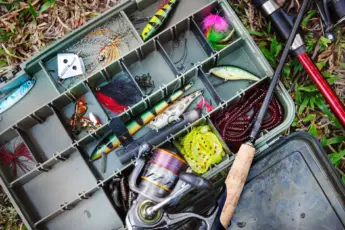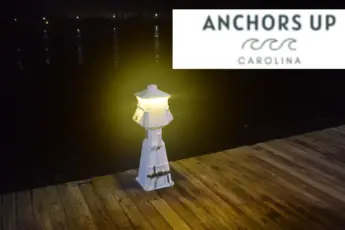One of the most prevalent and superb baitfish available in Georgia, South Carolina, and North Carolina is the ballyhoo, also referred to as a balao or halfbeak. The fish is unique looking and can be utilized to catch both saltwater bottom fish and bluewater game species well offshore of the coast. Just what exactly is a ballyhoo?
How Do You Identify A Ballyhoo
If you’re wondering, what is a ballyhoo fish, they are called halfbeak because the long protrusion extending from the mouth is situated on the lower jaw instead of, the lower and the upper. Watch out when handling a balao. The beak is sharp and can poke your skin.
The upper part of the fish is green before fading to silver along the sides and belly and as a result, appears bright and flashy. A unique characteristic is a yellowish-orange tip on the upper portion of the deeply forked tail which can be easily seen from the surface of the water. Lastly, the fish is long and slender.
What Can You Catch With Ballyhoo
When it comes to what eats ballyhoo, ballyhoo is excellent for catching fish on all levels. The bait is effective when fishing on the surface and the bottom of the seafloor.
Offshore
The offshore fish chasing and eating trolled rigged ballyhoo include wahoo, tuna varieties, dolphin, marlin, and sailfish. The bait can be fished naked, which means as is or with a skirt. Remember to break the bill off the balao before sending it back in the trolling spread because the predators don’t need to be stuck with another sharp point besides the hook.
Bottom Fish
Ballyhoo are excellent dropped down whole or as cut bait. Some of the more notable bottom fish to feed on ballyhoo include grouper, snapper, and sharks. Be prepared for a battle dragging them up from the wrecks or reefs below the surface.
How Big Do Ballyhoo Get
The ballyhoo is a small fish, that is a baitfish rather than a food fish. As far as size is concerned, the fish measure between ten and fifteen inches in length nonetheless predators consume them.
Where Do You Find Ballyhoo
The halfbeak is widely spread throughout the east coast of the United States from Maine down through Florida. Therefore, they are not hard to find.
Undoubtedly, anglers in Georgia, South Carolina, and North Carolina find the fish in offshore waters near shoals, reefs, and the open ocean.
How Can You Catch Balao
When it comes to how to catch ballyhoo, the fish is easily caught when they are gathered in large schools by feeding the fish ground chum.
It is essential to utilize an ultra-light rod and reel combination with a hair hook. Tip the hook with a small piece of squid, cut bait, or shrimp. The bait can be used fresh or frozen to be utilized on a future fishing adventure.
Although uncommon in the United States, the question is asked can you eat ballyhoo fish? Yes, ballyhoo is found on menus in Brazil and other countries.
How Do You Rig A Ballyhoo
When it comes to how to rig ballyhoo for trolling there are multiple methods to rigging ballyhoo for trolling. To make life easier, rigging aids make the task as simple as possible.
The standard and most challenging method require a trolling-sized J-hook with a tracer of copper wire secured to the hook’s eye.
When rigging the fish, line up the hook first, so the eye is equal to the mouth. It is important to mark where the point will protrude through the belly of the fish. Feed the hook into the mouth and push it through the marked hole. Lastly, use the copper wire to close the mouth tight on the eye of the hook.
A more straightforward method when ballyhoo fishing is to use a beaded chain. A beaded chain is what it sounds like, a beaded chain with a hook on the end. The chain is fed through the fish by a chain puller tool from where you push the chain into the fish and out through the mouth. Remember to wire the mouth closed.
Head Out Fishing With Ballyhoo On Your Next Trip
The next time you head out saltwater fishing in North Carolina, South Carolina, or Georgia give ballyhoo bait a chance at putting more fish in the boat. Head out to a bait shop near you to pick up a frozen pack or, better yet, catch fresh balao offshore before trolling or bottom fishing. We have fished with it numerous time and have had great success.








Leave a Comment
You must be logged in to post a comment.